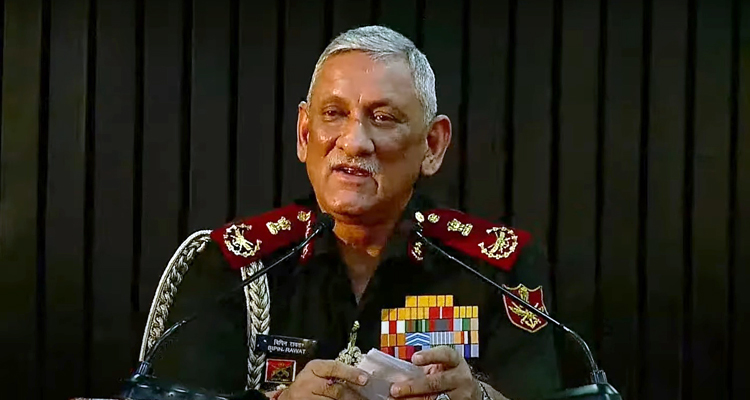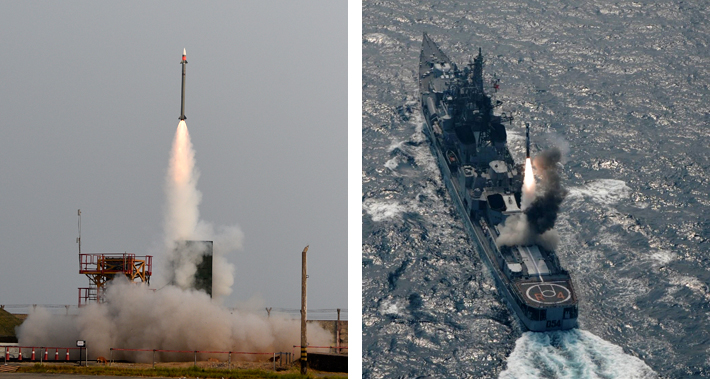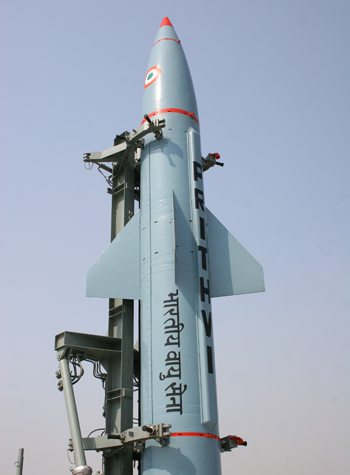INDIAN ARMED FORCES CHIEFS ON OUR RELENTLESS AND FOCUSED PUBLISHING EFFORTS

The insightful articles, inspiring narrations and analytical perspectives presented by the Editorial Team, establish an alluring connect with the reader. My compliments and best wishes to SP Guide Publications.

"Over the past 60 years, the growth of SP Guide Publications has mirrored the rising stature of Indian Navy. Its well-researched and informative magazines on Defence and Aerospace sector have served to shape an educated opinion of our military personnel, policy makers and the public alike. I wish SP's Publication team continued success, fair winds and following seas in all future endeavour!"

Since, its inception in 1964, SP Guide Publications has consistently demonstrated commitment to high-quality journalism in the aerospace and defence sectors, earning a well-deserved reputation as Asia's largest media house in this domain. I wish SP Guide Publications continued success in its pursuit of excellence.
- A leap in Indian aviation: Prime Minister Modi inaugurates Safran's Global MRO Hub in Hyderabad, Calls It a Milestone
- All about HAMMER Smart Precision Guided Weapon in India — “BEL-Safran Collaboration”
- India, Germany deepen defence ties as High Defence Committee charts ambitious plan
- True strategic autonomy will come only when our code is as indigenous as our hardware: Rajnath Singh
- EXCLUSIVE: Manish Kumar Jha speaks with Air Marshal Ashutosh Dixit, Chief of Integrated Defence Staff (CISC) at Headquarters, Integrated Defence Staff (IDS)
- Experts Speak: G20 Summit: A Sign of Global Fracture
Rocket Force and Theatre Commands
A committee was constituted that includes Vice Chiefs of Army, Navy and Air Force, Chief of Integrated Defence Staff and representatives of other ministries and departments, to resolve internal differences of Armed Forces, consult external stake holders like the MHA and MoF and look into the structure, composition, nomenclature and reporting channels of the proposed tri-Service commands
 |
The Author is Former Director General of Information Systems and A Special Forces Veteran, Indian Army |

Speaking at an event in India International Centre on September 15, Chief of Defence Staff (CDS) General Bipin Rawat stated that establishment of a ‘Rocket Force’ was being examined, while referring to bolstering India’s air power. Rawat described Pakistan as a proxy of China who will continue its proxy war against India in Jammu and Kashmir and is now attempting to create trouble in Punjab and some other parts of the country. Without naming China he said our northern adversary is likely to show aggression on our northern borders, whether it happens in the form of direct aggression or through use of technology, and we have to be prepared to deal with two borders having aggressive neighbours.
Rawat further stated that the Confucian or ‘Sinic’ civilisation would join hands with the Islamic civilisation to counter the western one as indicated in the ‘Clash of Civilisations’ authored by Samuel Huntington. But this was refuted by External Affairs Minister S. Jaishankar next day who after meeting his Chinese counterpart Wang Yi on sidelines of the Shanghai Cooperation Organisation (SCO) in Dushanbe, Tajikistan underlined that Asian solidarity would depend on the example set by India-China relations. However, China appears hell bent on spoiling relations with India given its aggressive moves.
The military does need to integrate and achieve true jointness which still appears far off
The People's Liberation Army Rocket Force (PLARF) is the fourth branch of PLA controlling all land-based ballistic missiles, both nuclear and conventional. PLARF is under direct command of the Central Military Commission (CMC). According to Pentagon estimates, China has some 1,200 conventionally armed short-range ballistic missiles (SRBMs), 200-300 conventional medium-range ballistic missiles (MRBMs), unknown number of conventional intermediate-range ballistic missiles (IRBMs), and 200-300 ground-launched cruise missiles. In 2020, China was assessed to have 320 nuclear warheads, which are being increased. PLARF comprises six ballistic missile brigades independently deployed in different military regions.

Given the advantages and the need to integrate, India definitely needs a ‘Rocket Force’ though General Rawat did not elaborate on it. Obviously this will need to be examined in great detail. Will it only hold land-based missiles – both conventional and nuclear like the PLA? If so, how will it relate to our Strategic Forces Command (SFC) which also controls air and sea-launched nuclear weapons? Alternatively, will the SFC be reorganised into the Rocket Force?
Given the advantages and the need to integrate, India definitely needs a ‘Rocket Force’
The military does need to integrate and achieve true jointness which still appears far off. According to reports, the proposal for establishing new tri-Service Commands hit a roadblock. An Air Defence Command (ADC) headed by the IAF and a Maritime Theatre Command (MTC) headed by the Navy was to be set up this year. Subsequently, three Theatre Commands were to be set up under the Army; one for the western border with Pakistan, and northern and eastern ones with China. Incidentally, China’s Western Theatre Command (WTC) covers the entire expanse of China’s border with Myanmar in the east to Afghanistan in the west including its borders with India, Bhutan and Nepal.

When the above proposal was presented at the Ministry of Defence (MoD) it evoked major inter-Service differences. The IAF opposed division of its “limited air assets” to different Theatre Commands. Apparently, the presentation was organised by the Directorate of Military Affairs (DMA) headed by the CDS though it is not known whether the Defence Minister, Defence Secretary and representatives from the Ministry of Home Affairs (MHA) and Ministry of Finance (MoF) were present. Earlier, Rawat had publicly referred to the Indian Air Force (IAF) as a “supporting force”, which had caused much bad blood.
As follow up to the above, a committee was constituted that includes Vice Chiefs of Army, Navy and Air Force, Chief of Integrated Defence Staff and representatives of other ministries and departments to resolve internal differences of Armed Forces, consult external stake holders like the MHA and MoF and look into the structure, composition, nomenclature and reporting channels of the proposed tri-Service commands. The Committee is to resolve various issues and recommend the way forward.
The catalyst to Indian military’s theatreisation in recent years is reorganisation of China’s PLA though this did not happen overnight. PLA’s transformation was ushered by President Jiang Zemin (1993-2003) with its implementation overseen by the Central Military Commission and Chief of General Staff of the PLA. In Germany the transformation process was initiated by the Berlin Decree to integrate German Armed Forces ensuring full benefits of ongoing technological advancements. In the US, catalyst for the transformation process commenced with Secretary of Defence, Donald H. Rumsfeld; the US Department of Defence created US Joint Forces Command as the transformation laboratory. The Goldwater Nichols Act finally brought about the transformational changes in US Armed Forces but this act too was debated for four years.
Many strategists and military thinkers in India have opined that only an Act of Parliament can bring about required transformation in for Armed Forces
Many strategists and military thinkers in India have opined that only an Act of Parliament (like the Goldwater-Nichols Act of the US) can bring about required transformation in for Armed Forces. Will the CCS have the inclination to undertake such an exercise through a committee in time-bound manner? Can the National Security Council (NSC) or the DMA be tasked to work out a Draft Act of Parliament for Military Transformation? Will this not be better for transformation to be implements smoothly rather than hurrying up in the present manner? Establishment of integrated theatre commands must be done in deliberate fashion over a period of time taking into account that the transformation period does not put us at disadvantage if war is thrust upon us during the changeover.





